Toledo Ballet’s Grand Dame
By Patty Gelb
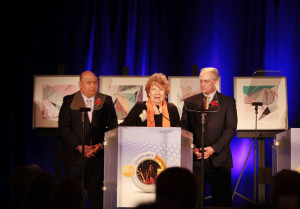 It’s almost unfathomable, but if not for scarlet fever, rheumatic fever, a caring mother and Marie Bollinger Vogt’s desire to walk, the Toledo Ballet wouldn’t be celebrating its 75th anniversary this year…in fact, it may not even exist.
It’s almost unfathomable, but if not for scarlet fever, rheumatic fever, a caring mother and Marie Bollinger Vogt’s desire to walk, the Toledo Ballet wouldn’t be celebrating its 75th anniversary this year…in fact, it may not even exist.
Vogt, (B.A. in literature, ’45) the founder of the Toledo Ballet, was a second grader in Toledo when she was stricken with a left-right combination of scarlet and rheumatic fever that left her bedridden for several months. Her mother, a lover of the arts, thought the best way for Marie to regain her strength and begin walking again was through dance lessons.
It was a wise decision. What began like millions of other little girls going to their first ballet class, grew to a career in dance whose influence is felt by thousands throughout Toledo and beyond. Her remarkable career was celebrated in May of this year when the Ohio Arts Council recognized Vogt in Columbus with the prestigious Governor’s Award for the Arts in Ohio in the category of Arts Administration.
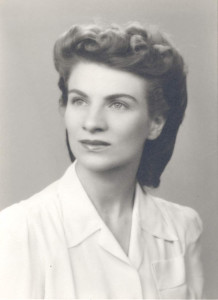 Vogt credits her fervor of the arts to her mother’s response to her daughter’s fever. While Vogt was ill with scarlet and rheumatic fever, she convalesced at home. She recalled her doctor bringing her a single rose every time he visited her.
Vogt credits her fervor of the arts to her mother’s response to her daughter’s fever. While Vogt was ill with scarlet and rheumatic fever, she convalesced at home. She recalled her doctor bringing her a single rose every time he visited her.
“They put a sign on the door that no one could come in and I guess they didn’t expect that I would survive,” said Vogt. “After recovering, I couldn’t actually walk, my legs were just numb.”
When Vogt recovered her mother placed her in ballet classes, beginning her dance education — although the first intention was to help her daughter regain her ability to walk. Beyond dance, Vogt’s mother exposed both of her daughters to the classic arts including music, painting and literature. Vogt had 11 years of music and piano education at the Toledo Conservatory. She studied art at the Toledo Museum of Art for eight years.
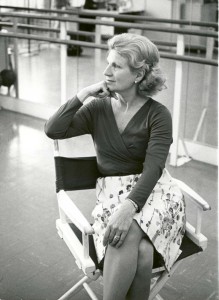 Vogt’s lifelong appreciation for the arts continues to this day. Fortunately for the Toledo community, she chose to focus on dance.
Vogt’s lifelong appreciation for the arts continues to this day. Fortunately for the Toledo community, she chose to focus on dance.
As a young dancer she excelled in her dance studies. Her studio had a Russian dance instructor from Detroit who taught ballet classes twice a week. This instructor saw the potential in her.
“I was enrolled in his classes and loved it,” she said. “He thought I was very strong and my feet were really strong.”
 Vogt continued her education in dance under Nicholas Tsoukalas in Detroit studying Greek classic dance, ballet and Spanish dance. She went on to spend summers at the George Balanchine’s School of American Ballet in New York. Vogt loved ballet but also really loved Spanish dancing and traveled to New York to study classic Spanish with Jose Fernandez. She also studied in California under Edwardo Cansino, Sr. Cansino was a renowned Spanish dancer, actor and the father of actress Rita Hayworth.
Vogt continued her education in dance under Nicholas Tsoukalas in Detroit studying Greek classic dance, ballet and Spanish dance. She went on to spend summers at the George Balanchine’s School of American Ballet in New York. Vogt loved ballet but also really loved Spanish dancing and traveled to New York to study classic Spanish with Jose Fernandez. She also studied in California under Edwardo Cansino, Sr. Cansino was a renowned Spanish dancer, actor and the father of actress Rita Hayworth.
“That was an exciting time,” said Vogt. “All over the world, I have always studied wherever and whenever I could.”
Vogt knew early on that she loved teaching dance. By the time she was a freshman at DeVilbiss High School she was already teaching dance at the Bach Conservatory of Music in Toledo.
“Although I did dance quite a bit, I was more interested in training dancers, developing a company and choreographing,” said Vogt. “They hired me at the Bach Conservatory to establish a dance department for them and I developed quite a department for them.”
 She taught in the evenings and weekends through high school at the Bach Conservatory and even ballroom dancing at Ottawa Hills High School. It was during this time that Vogt was first developing ballets to a relatively unknown musical score — Tchaikovsky’s “The Nutcracker.” Although this ballet has become synonymous with the holiday season – it was not popularly known in the U.S. until the 1960s. Because of her time at the Toledo Conservatory, Vogt was exposed to the now famous music.
She taught in the evenings and weekends through high school at the Bach Conservatory and even ballroom dancing at Ottawa Hills High School. It was during this time that Vogt was first developing ballets to a relatively unknown musical score — Tchaikovsky’s “The Nutcracker.” Although this ballet has become synonymous with the holiday season – it was not popularly known in the U.S. until the 1960s. Because of her time at the Toledo Conservatory, Vogt was exposed to the now famous music.
“I had not seen it before,” said Vogt. “But I just knew what the music said to me. The music for ‘The Nutcracker’ just filled me and filled my heart.”
In 1939, while still in high school, Vogt produced and choreographed a performance of Tchaikovsky’s work performed by a small group of dancers, held at the Toledo Museum of Art.
“At that time, there was an auditorium seating around 400 people with very limited lighting on the stage,” said Vogt. “The pianist sat on the stage to accompany us and we would perform excerpts. It wasn’t the full production at first and was very simple.”
 This performance ushered in an era. Vogt is credited with having the oldest running consecutive production of “The Nutcracker” in our country celebrating its 75th performance this year.
This performance ushered in an era. Vogt is credited with having the oldest running consecutive production of “The Nutcracker” in our country celebrating its 75th performance this year.
After developing the dance department at the Bach Conservatory, she decided she wanted to take the next step and start her own studio. Later, the same year as the first Nutcracker production, Vogt founded the Toledo Ballet.
She found space and built the first studio at Cricket West. When asked where early performances were held she shared, “Anywhere we could dance.”
At the time, The Paramount Theater was one of the city’s largest theaters seating 3,000. She met with the theater management and arranged the first show as a company to be held on their stage.
“It was a beautiful theater… and the first time we performed there, we filled it,” Vogt said. “People were sitting on the steps up and down the aisles. There were about 4,000 people who saw our group in their first performance.”
 Over the years Vogt took “The Nutcracker” to The Paramount, but the troop also performed ballets at the Rivoli Theater, Collingwood Arts Center, Whitmer High School, DeVilbiss High School, the downtown Riverwalk and eventually, Lourdes College. Vogt recalled several performances in unusual places as well.
Over the years Vogt took “The Nutcracker” to The Paramount, but the troop also performed ballets at the Rivoli Theater, Collingwood Arts Center, Whitmer High School, DeVilbiss High School, the downtown Riverwalk and eventually, Lourdes College. Vogt recalled several performances in unusual places as well.
“We danced in the Rose Garden downtown, right outside the jail,” she said. “Prisoners would look out and watch us dance.”
Vogt’s educational career continued during the time she was founding the dance company in town. Following high school, she started her college career at The University of Toledo. This was a very busy time for her. She attended classes during the day then, riding the city bus downtown, would teach dance and run the ballet in the evenings. She recalled being exhausted — but loving it.
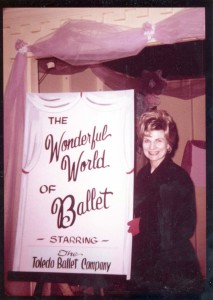 “I loved the dancers and young people of all ages,” Vogt said. “There was not a day that I went to that studio that I wasn’t excited. I was excited to go to teach.”
“I loved the dancers and young people of all ages,” Vogt said. “There was not a day that I went to that studio that I wasn’t excited. I was excited to go to teach.”
She felt she should have a rounded background in the arts and also loved writing. She often spent time writing articles and poetry. She used her time at the University majoring in literature and minoring in Spanish, graduating with honors.
Vogt continued to grow the Toledo Ballet’s reputation for quality dance. When Wolfgang Stresemann, the renowned German conductor came to town in 1949, he reached out to Vogt and the Toledo Ballet. He told her that they should bring the ballet and symphony together for a full performance of “The Nutcracker.”
“I said that was fine,” Vogt said. “But the problem was, although it is absolutely the most beautiful place to perform, the Peristyle lacks fly space for scenery.”
Stresemann decided that both the orchestra and the dancers would share the stage. This first collaboration had blue screens dividing the upstage from the downstage. The orchestra performed behind the blue screens and the dancers were in front. Stresemann was on a ladder to conduct the orchestra and watch the dancers at the same time. They had very little space to perform the ballet.
“The next year and from then on we had the whole stage and Wolfgang’s orchestra was in the pit,” she shared.
 Graduated from college, Vogt was focusing on her studio when in 1949 her life took a major pirouette.
Graduated from college, Vogt was focusing on her studio when in 1949 her life took a major pirouette.
She was hired by the President of the Junior Bar Association, Ted Vogt. He asked her to choreograph and teach a group of lawyers a dance to perform at the annual Gridiron Show. She developed a dance to the song “Cruising Down the River on a Sunday Afternoon” and dressed the lawyers in tutus with wigs. She gave them umbrellas to carry while dancing across the stage.
“They were really good sports wearing those costumes,” she shared. “One lawyer was supposed to represent a carrot and he did nothing but stand in the middle of the stage wearing his carrot costume with a big long green stem sticking up. It was a parody piece.”
The young dancer had a major impact on the young Ted Vogt. He stood watching her dance and work with the other dancers and fell in love with young Marie. They had a whirlwind romance and were married within four months.
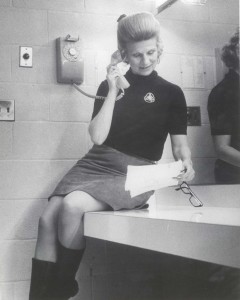 Ted Vogt attended every rehearsal of “The Nutcracker” over the years. Every once in a while he would chip in and assist with the show’s lighting. The couple loved the theater and attended many performance in town and while traveling around the world.
Ted Vogt attended every rehearsal of “The Nutcracker” over the years. Every once in a while he would chip in and assist with the show’s lighting. The couple loved the theater and attended many performance in town and while traveling around the world.
“I could see him out there in the house, with his hat and coat still on watching me every rehearsal,” she said. “Lawyers are great with words and he was so good with words. He had a great humor and he was a brilliant lawyer, a brilliant person and lots of fun.”
The couple had a loving marriage for nearly 50 years before Ted’s passing. Marie established a scholarship in Ted’s memory in The University of Toledo’s College of Law.
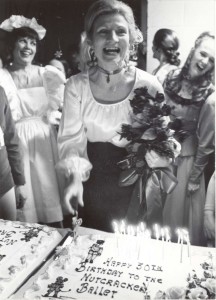 Vogt continued to work with the Toledo Ballet as the artistic director for fifty-five years. Toledo can credit Vogt for introducing the community to ballets like “A Midsummer’s Night Dream,” “Romeo and Juliet” and “Swan Lake.” It was her lead that brought internationally known dancers to special performances in our community over the years and she traveled with her troop to perform in a number of places, including New York City.
Vogt continued to work with the Toledo Ballet as the artistic director for fifty-five years. Toledo can credit Vogt for introducing the community to ballets like “A Midsummer’s Night Dream,” “Romeo and Juliet” and “Swan Lake.” It was her lead that brought internationally known dancers to special performances in our community over the years and she traveled with her troop to perform in a number of places, including New York City.
In the early 80s, she was approached by James Rouse a developer from the Franklin Park Mall. He wanted to create a collaboration, bringing the arts to the marketplace and asked if Vogt would consider moving the Toledo Ballet to the mall. In 1982, they moved and remained at that location until earlier this year when they moved to their new location next to Hobby Lobby on Monroe Street.
You can see Vogt’s touch at the Toledo Ballet’s nearly 10,000 square foot new dance studio. Her photos are displayed at the front entrance and along the main hallway. The largest studio space at the facility is the same size and layout as the stage of the Stranahan. This makes the studio the perfect practice space for the annual Nutcracker. This special dance space is named the Marie Vogt Studio in her honor and the wall on the exterior of the room is an homage to the former ballerina.
Vogt retired from her role at the Toledo Ballet 20 years ago, but remains very active with the dance company that she founded. She is the artistic director emerita on the Toledo Ballet’s Board of Trustees. She is also active with other arts organizations including the Toledo Opera and Symphony.
 Vogt has made a great impression on those who continue to run the studio today. Mari Davies, the executive director of the Toledo Ballet has the highest of regard for what Vogt accomplished with the company over the years and appreciates her continued guidance.
Vogt has made a great impression on those who continue to run the studio today. Mari Davies, the executive director of the Toledo Ballet has the highest of regard for what Vogt accomplished with the company over the years and appreciates her continued guidance.
“She has just afforded me so much retrospective of the organization. She is our roots,” said Davies. “She gives so much insight on things she did during her tenure. It is great perspective on what our potential continues to be.”
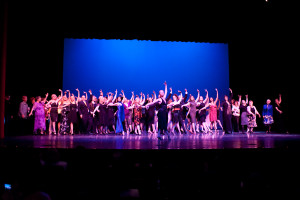 The Toledo Ballet celebrated its founder during a special performance in 2009 “Reverance: A Tribute to a Living Legacy, Marie Vogt.” As a surprise, the last number was “Reverance” performed by Vogt’s long time dance friend, Soili Arvola, whom the Toledo Ballet brought in for this special event.
The Toledo Ballet celebrated its founder during a special performance in 2009 “Reverance: A Tribute to a Living Legacy, Marie Vogt.” As a surprise, the last number was “Reverance” performed by Vogt’s long time dance friend, Soili Arvola, whom the Toledo Ballet brought in for this special event.
“We brought Soili in and the final piece it was Soili standing alone on the stage in a spotlight where she conducted a solo reverence for Marie who was sitting in the audience,” said Davies. “Then we brought in company members to join Soili in giving reverance to Marie. Then finally we invited anyone in the audience who had taken a class from Marie at any point to join us on the stage to complete reverance to Marie. We had about 200 people on that stage.”
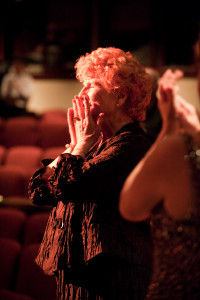 A photo of Vogt was taken while she was watching this performance and her reaction of the event is written on her face.
A photo of Vogt was taken while she was watching this performance and her reaction of the event is written on her face.
One of the major prongs of the Toledo Ballet’s mission is outreach and this year is a major milestone for the organization. It is celebrating its 75th anniversary and the equally-tenured performance of “The Nutcracker.” The Toledo Ballet has developed a special collaboration with the Toledo Museum of Art for this remarkable occasion. Toledoans will be able to celebrate this landmark anniversary with a special exhibition of Degas paintings from all over the world. There will also be a special performance by the Toledo Ballet in the Peristyle.
The organization and Davies wanted to share their respect for their founder and nominated Vogt to receive the Governor’s Award for the Arts in Ohio. The award ceremony was held in Columbus in May. The award was presented by the Ohio Speaker of the House Cliff Rosenberger and Senate President Keith Faber. The First Lady of Ohio, Karen W. Kasich, opened the celebration that tied in with Ohio’s Arts Day. Davies and a contingent from the Toledo Ballet accompanied Vogt to the event.
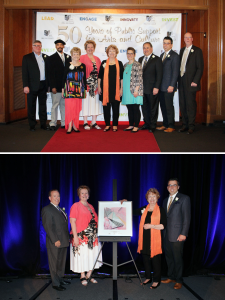 “It was fabulous,” said Davies. “Marie needed to walk up several stairs to receive the award. She asked Joe Zerbey (president and general manager of the Toledo Blade which is a longtime supporter of the ballet) and Bill Southern, who is a member of the board, to escort her to the stage. The most poignant vision for me is of them walking her to the stage.”
“It was fabulous,” said Davies. “Marie needed to walk up several stairs to receive the award. She asked Joe Zerbey (president and general manager of the Toledo Blade which is a longtime supporter of the ballet) and Bill Southern, who is a member of the board, to escort her to the stage. The most poignant vision for me is of them walking her to the stage.”
Vogt was incredibly touched by the award and enjoyed the day surrounded by those who love her.
“The Governor’s wife was a charmer,” she said. “She looked like she could be a dancer herself.”
Vogt remains a jewel in our community and is one of Toledo’s most recognized and honored residents. She has had an indelible effect on thousands of dancers and lovers of the arts in Toledo and beyond, and she enjoyed every moment of it.
“I never called it going to work,” said Vogt. “All of those years I was really excited. It was a pleasure. It was fun. It was wonderful and is wonderful to meet people from the past and the present who have enjoyed dance.”
This legend always tried to impart a love of music and dance in her students but doesn’t feel it should be limited to young children at a dance studio.
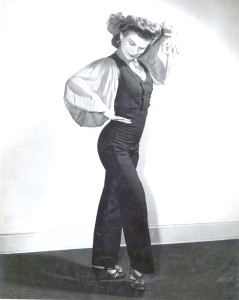 “Dance is for everyone,” she shared. “It is for all ages. And if you are not physically able, your mind can assume the art of dance. It’s never very far away. We can see dance even in our homes on TV but there is nothing like seeing it in the raw and seeing dancers develop at the hand and the advice of a good teacher.”
“Dance is for everyone,” she shared. “It is for all ages. And if you are not physically able, your mind can assume the art of dance. It’s never very far away. We can see dance even in our homes on TV but there is nothing like seeing it in the raw and seeing dancers develop at the hand and the advice of a good teacher.”
A good teacher like Marie Vogt…
To learn more about the Toledo Ballet, click here to visit their website.
Photo credit for photos from the performance of “Reverence” goes to Photo Works, Inc.






